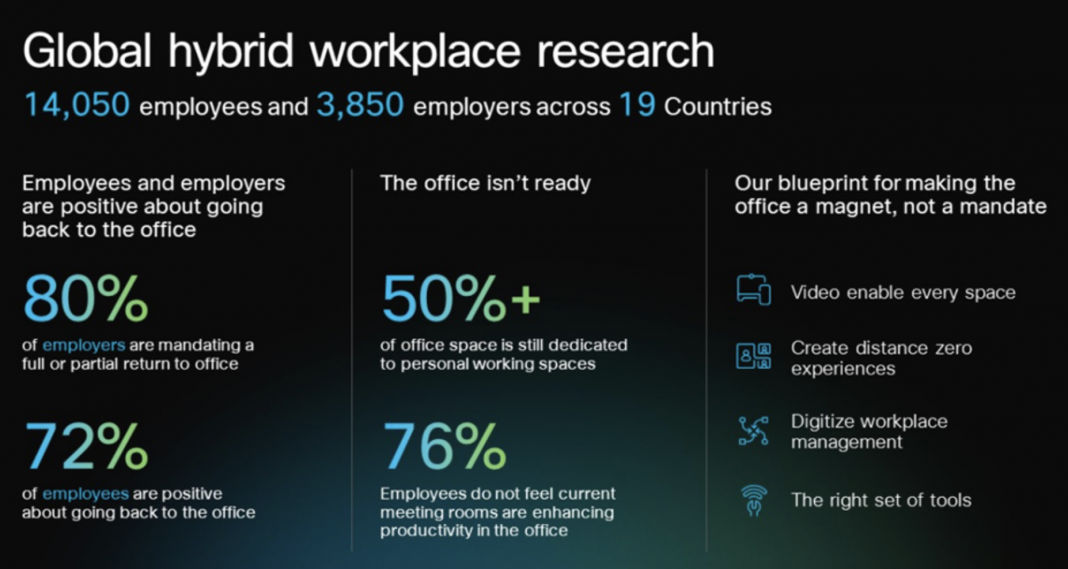Webex’s global hybrid work study reveals challenges and opportunities arising out of hybrid work, highlighting the need for office redesign, AI integration, and employee upskilling.
Originally published in Allwork.space .
The future of work is hybrid, and many organizations are now grappling with the challenges and opportunities presented by this new reality, according to Webex’s Global Hybrid Work Study.
The study, conducted from December 2023 to January 2024, surveyed 14,050 full-time employees and 3,800 employers across 19 countries, providing a comprehensive look at hybrid work environments.
According to the survey, 80% of employers globally are mandating at least a partial return to the office. Moreover, the data suggests that current office layouts and technology do not adequately support collaboration.
Over 50% of office space is still dedicated to personal working spaces, which are unsupportive of a collaborative environment.
Notably, 76% of workers believe that their company’s current meeting rooms do not contribute to making their office time more productive — which contradicts the objectives businesses had when they initiated policies to bring employees back to the office.
In response to these issues, about 71% of companies are planning to remodel their work environments within the next two years to make them more conducive to collaborative work.
Artificial Intelligence (AI) is also expected to be a cornerstone in the future of workspaces, with 73% of organizations in the Americas intending to invest in AI-powered collaboration tools, and 68% planning to incorporate AI technology into their work environments by 2025. However, the study also reveals that only 43% of workers feel equipped to utilize AI technology in their jobs. This sentiment also suggests the importance for companies to prioritize upskilling and training in new technologies as they move towards improving hybrid working models.
Cisco, the owners of webex, shared their “blueprint for making the office a magnet, not a mandate,” which includes the following:
- Video-enabling every space,
- Creating Distance Zero Zones,
- Digitizing workplace management,
- and giving employees and IT teams the right set of tools.
The data suggests that by adopting AI, redesigning office spaces for better collaboration, and focusing on training employees in new technologies, organizations can cultivate a hybrid work environment that improves support for flexible work environments.


